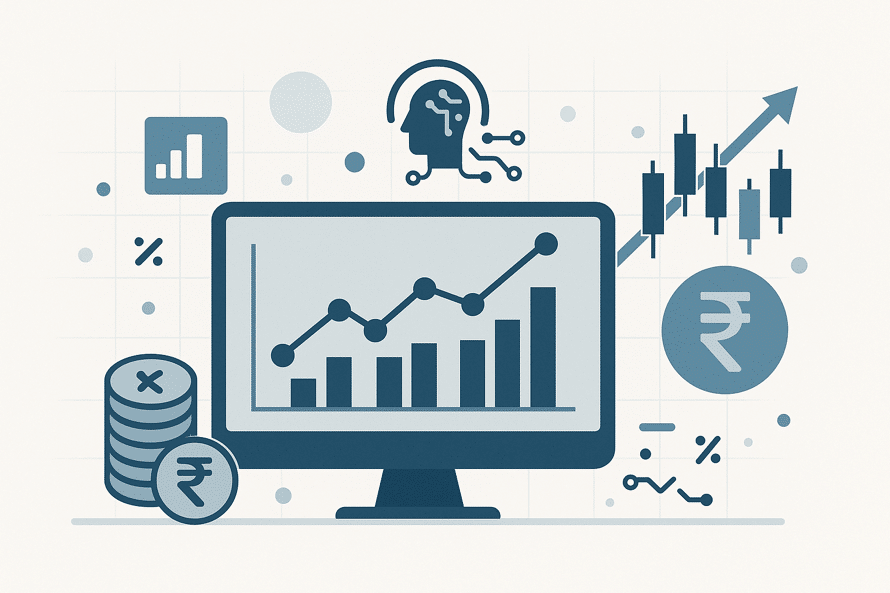
In today’s fast-moving financial world, making decisions based on gut instinct just doesn’t cut it. That’s where quantitative analysis steps in — a data-driven approach to understanding markets, managing risk, and optimizing portfolios. In 2025, it’s not just a tool used by hedge funds and banks — it’s shaping how every smart financial decision is made.
Let’s break down what quantitative analysis means in finance, how it’s being used right now, and where it’s headed next.
What Is Quantitative Analysis in Finance?
Quantitative analysis (QA) involves using math, statistics, and algorithms to analyze numerical data. In finance, that means crunching numbers to spot patterns, test theories, and build models that help predict future trends or minimize risk.
Unlike qualitative methods (like expert opinions), quantitative analysis gives you hard, objective data that can be measured, repeated, and scaled — the kind of insight investors can trust.
How Finance Professionals Use Quantitative Analysis Today
Financial institutions use quantitative techniques to solve complex problems and gain a competitive edge. Here’s where it’s making the biggest impact:
1. Risk Modeling
Banks and asset managers use models like Value at Risk (VaR) and stress testing to understand the worst-case scenarios for investments. These models help answer questions like: What’s the maximum I could lose in a market crash?
2. Portfolio Optimization
Quantitative tools help design portfolios that maximize return while minimizing risk. Today, machine learning models are taking this even further, adapting in real-time to new market data.
3. Algorithmic Trading
Trading bots driven by statistical models can execute thousands of trades per second. Some use natural language processing to scan news headlines and tweets for market-moving sentiment.
4. Derivatives Pricing
Complex financial products like options or futures are priced using advanced formulas such as the Black-Scholes model. Quant analysis ensures these prices reflect real-time risk and volatility.
5. Market Forecasting
By analyzing historical data and economic indicators, quants build models to predict where markets may head next — a crucial tool for investment managers.
The Tools Behind the Numbers
Modern quantitative analysts (a.k.a. “quants”) rely on a powerful toolkit:
- Programming languages: Python, R, and C++ are the go-to languages.
- Statistical software: SPSS, SAS, and MATLAB help process large datasets.
- Machine learning frameworks: TensorFlow and PyTorch allow for advanced predictive modeling.
- Databases: SQL is still essential for managing financial data.
These tools are now more accessible than ever, making advanced analysis available to a wider range of professionals — not just PhDs on Wall Street.
Why Quantitative Analysis Matters More Than Ever
Here’s why finance is going all-in on quantitative methods:
- Objectivity: Data doesn’t lie. Quant methods remove bias from decision-making.
- Scalability: Models can be applied across portfolios, asset classes, or global markets.
- Predictive Power: Spot trends and risks before they happen.
- Efficiency: Algorithms can process and act on data faster than any human.
As financial markets become more complex and competitive, relying on intuition alone is no longer an option.
The Future of Quant in Finance: AI, Big Data, and Beyond
The next wave of quant innovation is already here:
- AI-Powered Insights: Machine learning models now process massive datasets to improve everything from fraud detection to asset allocation.
- Real-Time Trading Bots: Reinforcement learning (a type of AI) is powering trading bots that adapt and evolve in real time.
- Personalized Finance: Fintech firms use quant models to build tailored portfolios and credit products for individual users.
- Quantum Computing (yes, really): Still in early stages, but it could one day supercharge financial modeling.
That said, these advancements bring new challenges — like ensuring data quality, avoiding algorithmic bias, and protecting user privacy. Ethical and regulatory oversight is more important than ever.
How to Get Started with Quantitative Finance
Whether you’re a retail investor or a professional, you don’t need to be a data scientist to benefit from quant tools. Here’s how to get started:
- Build your data literacy: Learn basic statistics and how to interpret financial models.
- Experiment with tools: Try Python or Excel to analyze real market data.
- Use robo-advisors: Many investment platforms now use quant-based models to manage your money automatically.
- Stay curious: Follow financial blogs and read market analysis with a critical, data-savvy lens.
Key Takeaways
- Quantitative analysis is the backbone of modern finance, enabling smarter, faster, and more objective decision-making.
- It’s used in risk modeling, portfolio management, trading, and forecasting — with AI and big data taking it to the next level.
- With the right tools and mindset, anyone can start applying quant principles to their own financial decisions.
FAQs
Q. What is the difference between qualitative and quantitative analysis in finance?
A. Quantitative analysis uses numbers and statistics. Qualitative analysis looks at factors like management style, company reputation, or economic conditions that can’t be easily measured.
Q. Do I need to know coding to work in quantitative finance?
A. Basic coding skills (like Python or SQL) are increasingly expected, but many tools now have user-friendly interfaces. It’s more about the ability to think logically and work with data.
Q. Is quantitative analysis only for big institutions?
A. Not anymore. Thanks to fintech platforms, robo-advisors, and open-source tools, even individual investors can benefit from quant methods.




